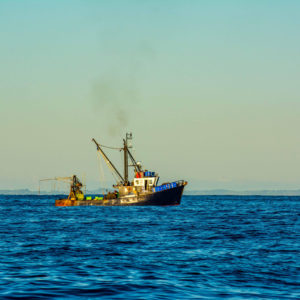Calls are getting louder for 30 percent marine protected areas out to 200 nautical miles, including a network of no-take zones. There are major concerns with this set-and-forget strategy. Applying MPA fishing closures to some of our most productive areas will inevitably displace effort, intensifying depletion and biodiversity loss in the other 70% of the marine environment.
Rescue Fish is taking a more ambitious approach, seeking 100 percent improved marine protection within 12 miles of the coastline by applying ecosystem based fisheries management principles. It’s a bold plan to manage people’s behaviour and fish stocks because marine reserves are not fisheries management tools.
The Rescue Fish policy package has been developed over many years by the New Zealand Sport Fishing Council and LegaSea teams. It’s a compilation of science and historic experiences including aspects of fisheries management from overseas and in Aotearoa.
We need to rebuild depleted fish stocks and restore marine biodiversity by having more fish in the water and meaningful protections for sensitive habitats.
What does change look like?
New fisheries legislation and more focused decision making is required to remove or mitigate the adverse effects of fishing and land use across 100 percent of inshore waters.
There is a worldwide move toward ecosystem based fisheries management which takes the whole system into account, that is the fishery, the impacts of fishing on the marine environment and how that may affect future productivity.
Some of the key changes to implement the Rescue Fish approach are –
- No bottom trawling, dredging or seining within 12 nautical miles of the coast. This is the most productive area with sensitive nursery habitats critical for the future success of fish populations.
- Killing fewer fish. Resetting catch levels to enable depleted fish stocks to rebuild to a minimum of 50% of their estimated unfished size. As stocks rebuild to a more natural state they can provide the ecosystem services required for a healthy and resilient marine environment.
- Catch levels are set at precautionary levels to account for the lack of high quality independent data on exploited inshore stocks and other vulnerable species.
- Taking a staged approach to marine protection at a national, regional and local level. Fish management areas will be reduced to more practical levels so regional and local initiatives are effective at meeting community ambitions.
- All decisions will be based on the principles of kaitiakitanga, guardianship of the marine resources and people. This means Maori must be elevated to a governance role alongside the Crown so the Treaty of Waitangi is given effect and conservation principles are always applied.
- Having tools available at a local level so that iwi, hapu and the community can work together to manage their marine resources. This could include local area, fishing and species harvest controls.
- Behavioural change. Educating the public to better manage their activities on land that affect the near shore environment. This includes improved farming practices and infrastructure management by territorial authorities, to reduce land run-off. It also means changing people’s behaviour to reduce waste and how they dispose of non-perishables.
- Transitioning commercial fishing to low impact techniques to deliver premium quality fish that attracts high value returns.
Having 100 percent marine protection means a robust marine ecosystem and a legacy of abundance for future generations to enjoy and derive high value returns.
How do we get there?
Achieving the ambitious Rescue Fish plan will require political commitment, Maori getting on board with change, and not stopping at 30 percent protection. There are many more benefits for us and future generations if we embrace the vision for 100 percent marine protection. It doesn’t make sense to settle for anything less.
Petition
To achieve success we need a strong show of public support for change. Please sign the Rescue Fish petition.





